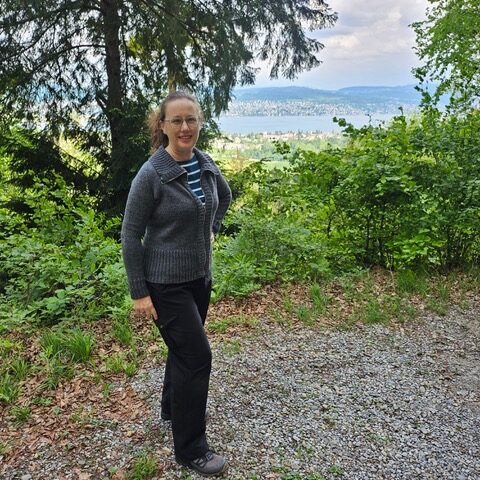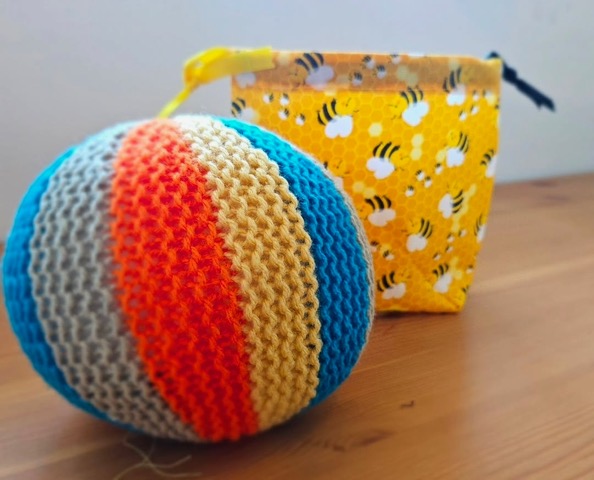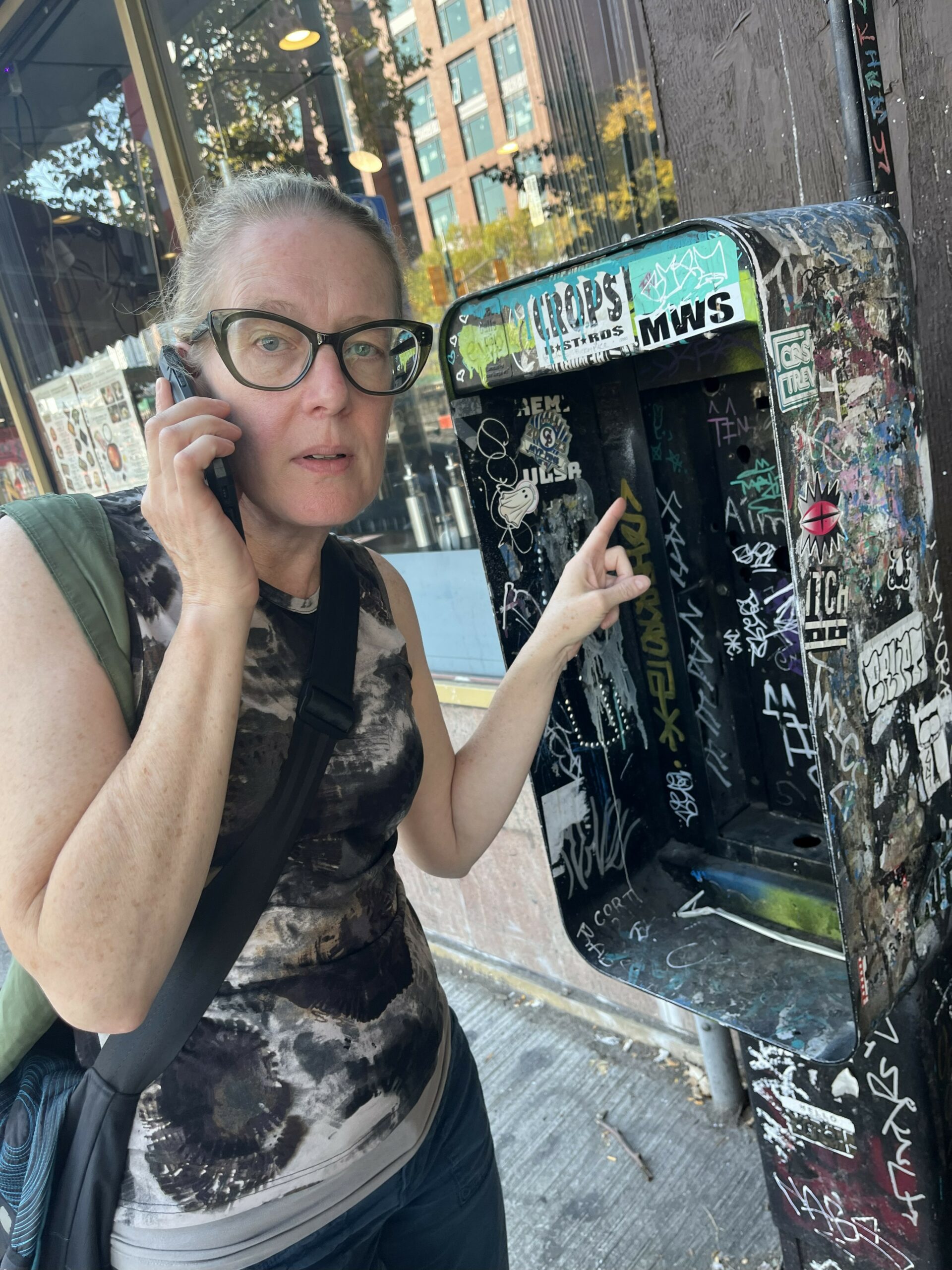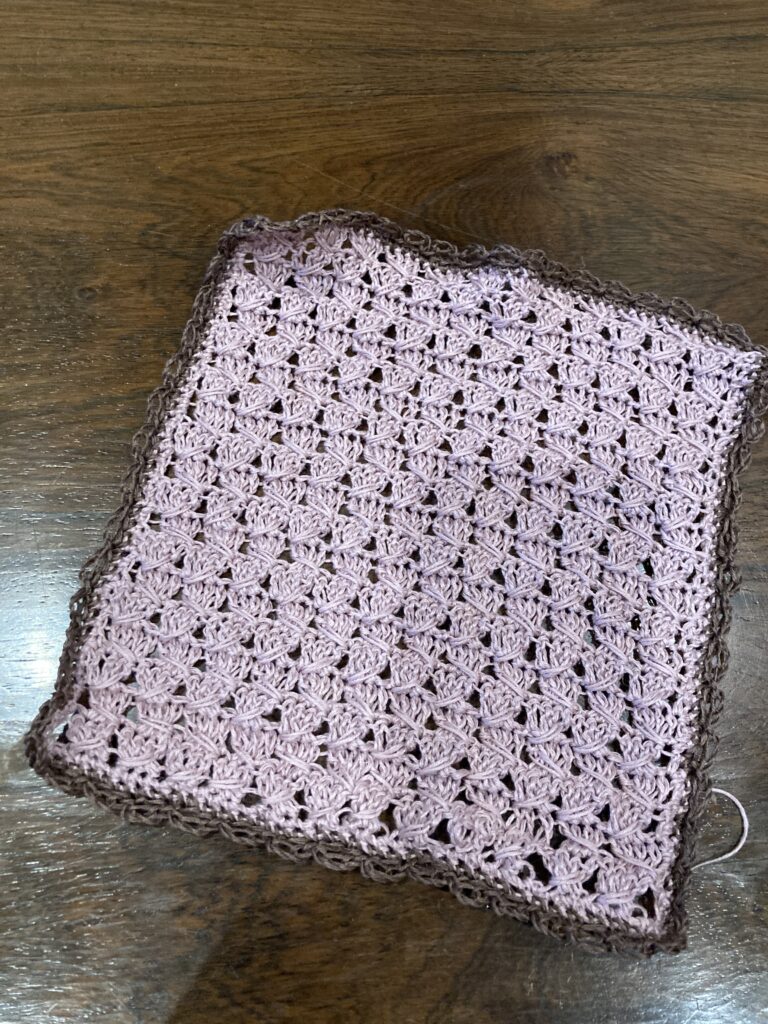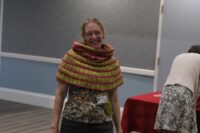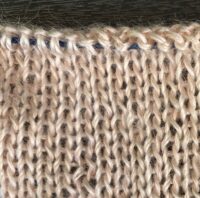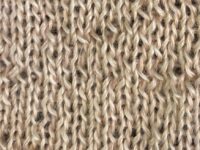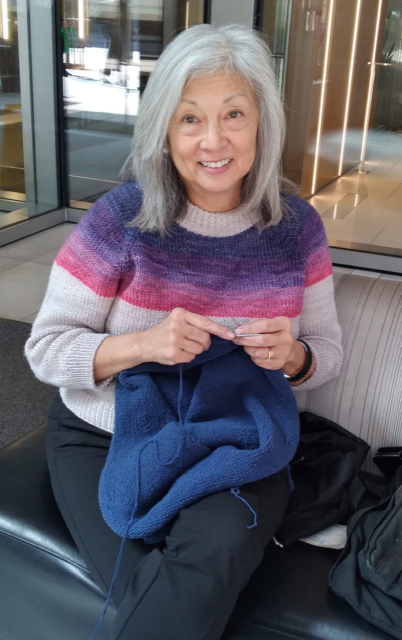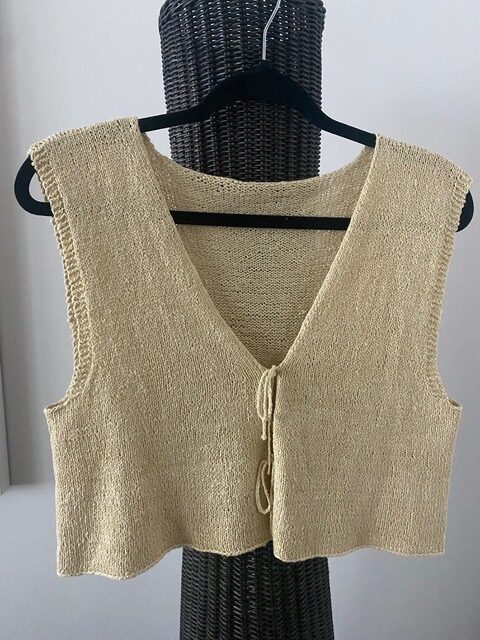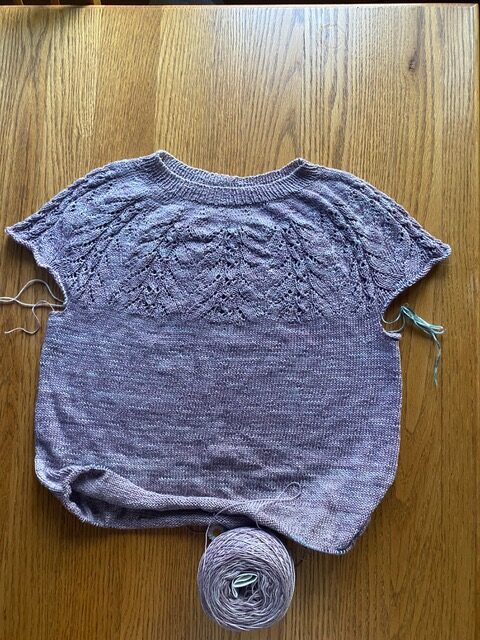
For our first sponsor spotlight of the year, we’ve asked Marisa Veri of Pretty Little Yarns to choose 5 questions to answer so we can learn more about her family-run yarn business and her passion for the local GTA fibre community.
Tell us about your team.
My team is extremely small, in fact, some may think it is only me. Truth be told, it mostly is, but I would be remiss if I didn’t recognize the part my family plays in making this business work. Like many yarn and fibre businesses, Pretty Little Yarns Ltd. is truly a family business. My husband, Andrew, attends almost every show with me, helps load and unload the product, and is often responsible for late night skeining while I frantically label my wares. My little boys are a bit bigger than when I began this, and they have taken to helping at shows with unloading, setting up, running the cash, and chatting to the customers – they have even tried their hand at dyeing! Even though for the most part I am a one-woman show, I’m really fortunate to have these people supporting my dreams and helping make the magic possible.
How does your community contribute to your business?
I find the Canadian fibre community in general to be such a massive part of both my life and my business, it is almost impossible to imagine things without it. I aim to be at as many fibre festivals as possible throughout the year, and at those events there are customers and other vendors who have watched my business and my family grow up. People who notice the new products that I’m excited about, or who show me what they made with their last purchase or ask about my children. It’s all those points of connection that really fuel my involvement in this industry. There is such a strong collaborative dyer community in Ontario where many of us shop owners and dyers work together on various projects, host pop ups together, share opportunities and generally support one another. In a world of cutthroat entrepreneurialism, it is a really refreshing business to be in
What do people never ask you, but you wish they would?
I wish that more people would ask me about colour choices. I have a really strong background in colour theory from my days as an Interior Designer, but it is just one of those skills that has come really naturally to me my whole life. Colour is my JAM! So when people come to my booth agonizing over choosing the right shade for their project, I’m always bursting with wanting to help. Please never be shy if you see me at a show, ask for help if you need it. For online orders, you can always email or DM me with colour questions and I can give suggestions and take photos of different yarns together for you or even set up a video call.
Do you knit English or Continental or some other way?
I can do both. I’ll use the English style when casting on (I usually use the Cable Knit cast on), but then Continental for actual knitting.
What project are you dreaming about doing next?
Over the summer I completed a Fossil Frenzy Tee Jr for my oldest son. With fingering weight stranded colourwork and ladderback jacquard for float management, it was truly a labour of love. Now, of course, my second son wants his very own hand-made, hand-dyed sweater, so I have been working on the planning stages of his masterpiece. He would like a black sweater with red, yellow, and orange flames licking up from the hem and the sleeve cuffs. I would like a DK or heavier weight yarn and stranded colourwork rather than intarsia so that the project isn’t quite as time consuming. This perfect pattern does not exist, (or if it does, please email me a link and I will reward you in yarn!) For this project the dreaming is a big aspect. I have found some charts for flames that may work, and I intend to dye the colours up myself. The major sticking point is choosing what plain sweater pattern to superimpose this onto – so far, I’m thinking Strange Brew by Tin Can Knits might be the way forward. I am really looking forward to getting it on my needles though. It is going to be such an amazing passion project.
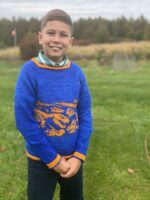
What are some new and upcoming things our membership should be on the lookout for at your shop?
With the “show season” coming to a close, it might look like not a lot is happening when you check out our social media. In fact, during this quieter time of year where I normally hunker down and do all of the administrative catch up and planning for next year, I intend to do a full website overhaul. Please keep your eyes peeled for our announcement of when that is completed. I intend to launch it in February, ahead of the show season. Speaking of which, you can also keep a lookout for our 2026 show season line up, but for now I can tell you that next year promises to be our busiest yet! The season will kick off in March, and we already have spots confirmed at five festivals before the first half of the year is through. I want to do more frequent LYS pop ups in 2026 as well, to bring my yarn within squishing distance between shows. Online or in person, you’ll be able to check us out all year long!


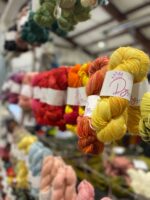
Don’t forget to visit our membership hub to see the discount that Pretty Little Yarns offers TKG members!

